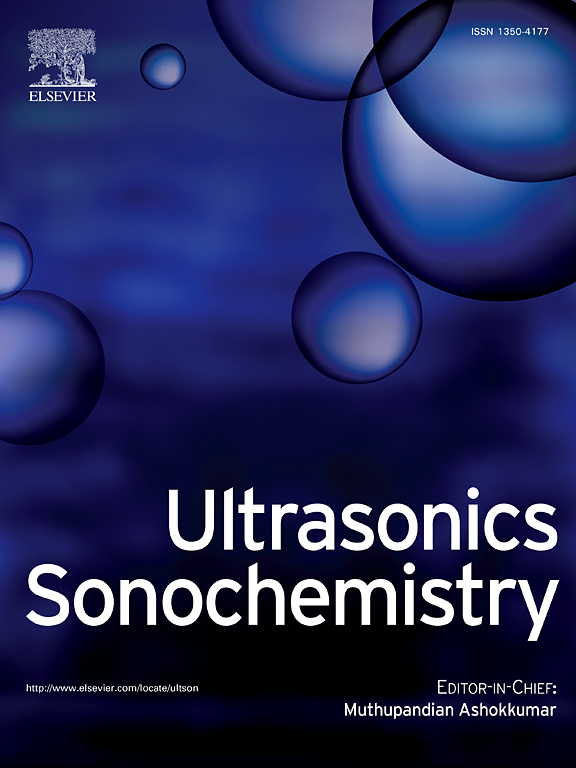Impact of combined ultrasonic and microwave vacuum drying on physicochemical properties and structural characteristics of polysaccharides from shiitake mushrooms (Lentinus edodes)
IF 8.7
1区 化学
Q1 ACOUSTICS
引用次数: 0
Abstract
In this study, ultrasonic technology was combined with microwave vacuum drying technology to explore the impacts of different coupling methods (ultrasonic pretreatment and ultrasonic coupled drying) on the structural characterisation and physicochemical properties of shiitake mushroom (Lentinus edodes) polysaccharides at different ultrasonic powers (0, 120 and 280 W), and compared with hot air drying (HAD). The results demonstrated that the monosaccharide composition of Lentinus edodes polysaccharides (LEPs) remained largely unaltered after treatment with various drying methods, although significant disparities in molar content were observed. Air ultrasound combined with microwave vacuum drying (USMVD) at 280 W ultrasound power resulted in LEPs with higher contents of total sugars (8.12 ± 0.13 g/100 g), reducing sugars (10.32 ± 0.3 mg/g) and uric acid (2.23 %) compared to those obtained from the HAD treatment. Furthermore, the combination of US280MVD drying treatment of LEPs exhibited a reduction in molecular weight and an enhancement in shear-thinning ability. The results of the study indicate that USMVD is a promising drying treatment technology.
求助全文
约1分钟内获得全文
求助全文
来源期刊

Ultrasonics Sonochemistry
化学-化学综合
CiteScore
15.80
自引率
11.90%
发文量
361
审稿时长
59 days
期刊介绍:
Ultrasonics Sonochemistry stands as a premier international journal dedicated to the publication of high-quality research articles primarily focusing on chemical reactions and reactors induced by ultrasonic waves, known as sonochemistry. Beyond chemical reactions, the journal also welcomes contributions related to cavitation-induced events and processing, including sonoluminescence, and the transformation of materials on chemical, physical, and biological levels.
Since its inception in 1994, Ultrasonics Sonochemistry has consistently maintained a top ranking in the "Acoustics" category, reflecting its esteemed reputation in the field. The journal publishes exceptional papers covering various areas of ultrasonics and sonochemistry. Its contributions are highly regarded by both academia and industry stakeholders, demonstrating its relevance and impact in advancing research and innovation.
 求助内容:
求助内容: 应助结果提醒方式:
应助结果提醒方式:


